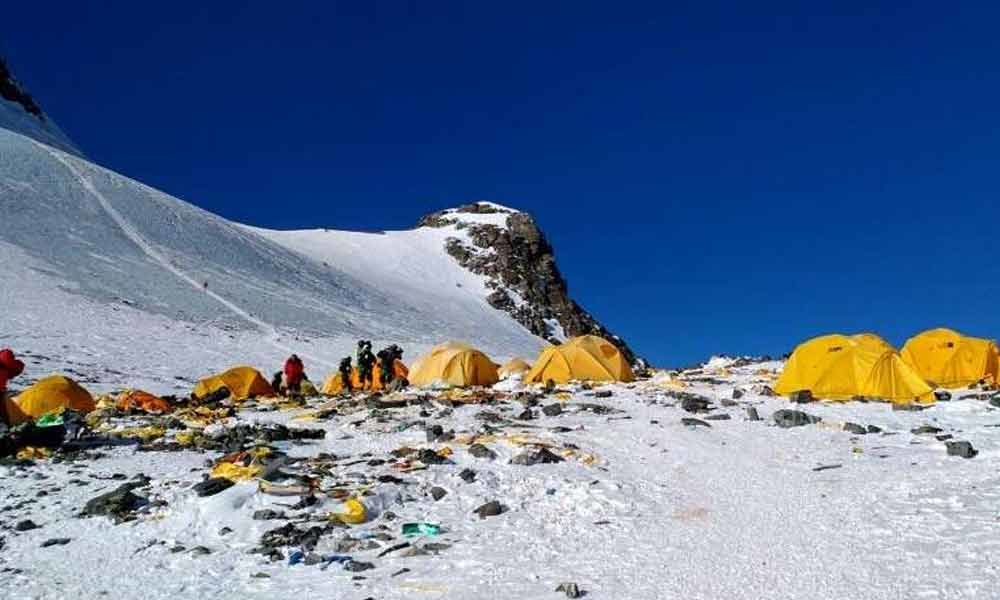Progress in garbage sorting on Mount Everest

Garbage was sorted for collection during the latest climbing season on the north side of Mount Everest in Tibet, officials said here on Sunday.
Lhasa, June 16: Garbage was sorted for collection during the latest climbing season on the north side of Mount Everest in Tibet, officials said here on Sunday.
As the climbing season ended at the end of May, the Tibet Mountaineering Association, which administers all climbing activities on the north side, is still busy sorting the accumulation of garbage over the past few months.
"The total volume of garbage produced by climbers amounts to 13 tonnes. It is generally classified into domestic waste and mountaineering garbage," Pema Tinley, deputy director of the association, told Xinhua news agency, adding that his department had already prepared different containers for various types of waste before the season began.
Domestic waste is further sorted into kitchen waste, human waste, polluted water, cigarettes, and others.
At the base camp of 5,200 metre, each waste category is placed into separate drums that the association gave out to all nine teams registered to climb from the north side this year.
"Those drums were bought from Nepal. They are specially designed for the extreme weather here in the Himalayas, and are solid enough to stand the low temperatures," Tinley said.
Tinley started working on the mountain in early April. Fellow colleague Dechen Udrup was appointed to take charge of environmental protection.
"We went to each team every day to see if they were sorting garbage as we required, and sometimes we went up to the camps at 5,800 and 6,500 metres. Garbage-sorting also needed to be implemented up there," said Udrup.
An eco-friendly toilet was also added at the camp at 7,028 metres this year. Climbers were asked to put their waste into a barrel with rubbish bags underneath the toilet.
Similar facilities were also installed at camps at 5,200, 5,800, and 6,500 metres. All were removed as the climbing season ended.
Bringing all the garbage down from such a high altitude is no easy task. This year, the association drew on more help from locals. Villagers down the mountain could volunteer to transport garbage down, and the association would pay them according to the weight of the garbage.
As for mountaineering waste, which includes used tents, ropes, oxygen bottles, and batteries, climbing guides would also get paid if they brought such waste down from above 7,028 metres, where the villagers were not able to go.
"Used climbing gear is of great value if we use it in the right way. Tents and oxygen bottles can be used again," said Udrup, adding that a program aimed at recycling mountaineering waste had been set up in Lhasa, and artists had been invited to design artworks out of it.




















